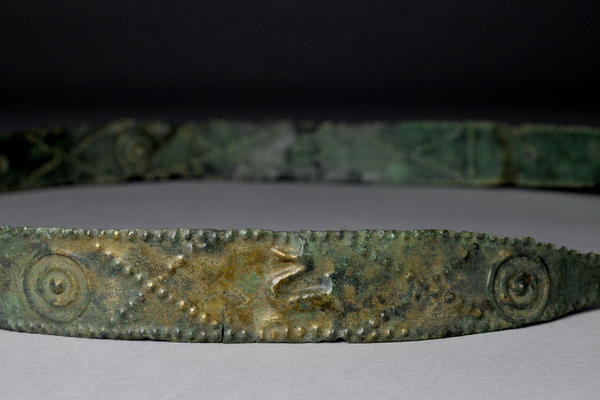Just south of Salzburg along a mountainous lake in Austria, a cemetery of over 2000 cremations and inhumations was found amongst a maze of salt mines. This iconic site, Hallstatt, was so extensive and wealthy that it named an entire period of later prehistory. The site was first excavated in the mid-19th century and was visited by Sir John Evans in 1866. Evans and John Lubbock went on to finance a phase of work at the site from 1866–69, in part to secure artefacts for their personal collections. These objects now form part of Sir John Evans’ extensive collection of antiquities that was donated to the Ashmolean Museum in 1927 by his son, Sir Arthur Evans, Keeper of the Ashmolean 1884–1908. The 187 finds from the 1866–69 phase of excavation at Hallstatt comprise a unique assemblage which has yet to be fully analysed. They include objects made of bronze, iron, gold, amber, glass, clay, bone and stone, and range from dishes to personal ornaments, from axes to weapons.
This collaborative project, funded by the Prehistoric Society's Collections Study Award, aims to catalogue and analyse the Ashmolean’s Hallstatt collection for the first time, providing information that will be freely available through Ashmolean Collections Online and various publications. It has two key research aims. (1) The team will examine each object in the collection and create a detailed catalogue of the material, and to evaluate the assemblage as a whole. Research will focus on evaluating production techniques, dating, decoration, and use-wear for all objects. A key question to be considered is what can be learned about the archaeological context and about the people of Hallstatt from the objects in this antiquarian collection. (2) The team will study evidence in the Sir John Evans archive concerning the 1866–69 work at Hallstatt. The archive currently contains a number of letters and notes from Evans and his colleagues about the work at Hallstatt, which have never been published. Research will focus on establishing contextual information about the assemblage, its recovery, and how both were regarded by the contemporary antiquarian community. It will also consider the history of the collection to the present day.
Team
The project team includes Dr Jennifer Foster, University of Reading / University of Oxford; Dr Courtney Nimura, University of Oxford; and Alison Roberts, Ashmolean Museum, University of Oxford. They will also work with Ian Cartwright, University of Oxford (archaeological photographer); Nick Griffiths (archaeological Illustrator); and Ilaria Perzia, University of Oxford (project administration).
Contact
For more information about this project, please email Dr Courtney Nimura: courtney.nimura@arch.ox.ac.uk

Ornamented sheet bronze belt with one end tapering to a hook from the Early Iron Age cemetery, Hallstatt, Austria (© Ashmolean Museum, AN1927.888)